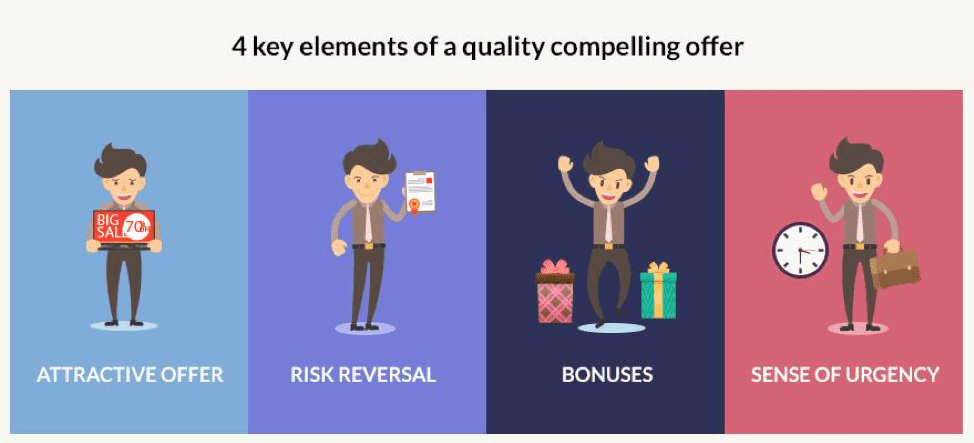
There’s one thing no business can thrive or operate profitably without – a compelling offer. It’s the heart of any business success and the lifeblood that keeps all the business processes moving seamlessly forward.
That being said, whatever it is that you’re offering (a product, service, education, consultancy, and so on), you’ll have a much better chance of success if you make that offer as compelling as possible.
But what does a compelling offer mean exactly? To paraphrase Marlon Brando in The Godfather, a compelling offer is that irresistible offer your target customer simply cannot refuse. Usually, it comes immediately after the lead magnet.
Creating a compelling offer requires extensive knowledge of your target audience and their specific needs and challenges, but you must also be very familiar with the industry and your niche, have excellent copywriting skills and the ability to deliver on what your offer promises.
To make things easier for you, we’ve identified four key elements you should include in your offer to make it as compelling as possible.

Conclusion
As you can see, compelling offers come in many different shapes and forms and can be used to significantly improve your overall sales and revenue.
Whether you decide to offer a free trial, a bonus product or feature, a discount, or a money-back guarantee, hopefully, some of the tips I shared above will help you make your customers a compelling offer they just can’t turn down.

